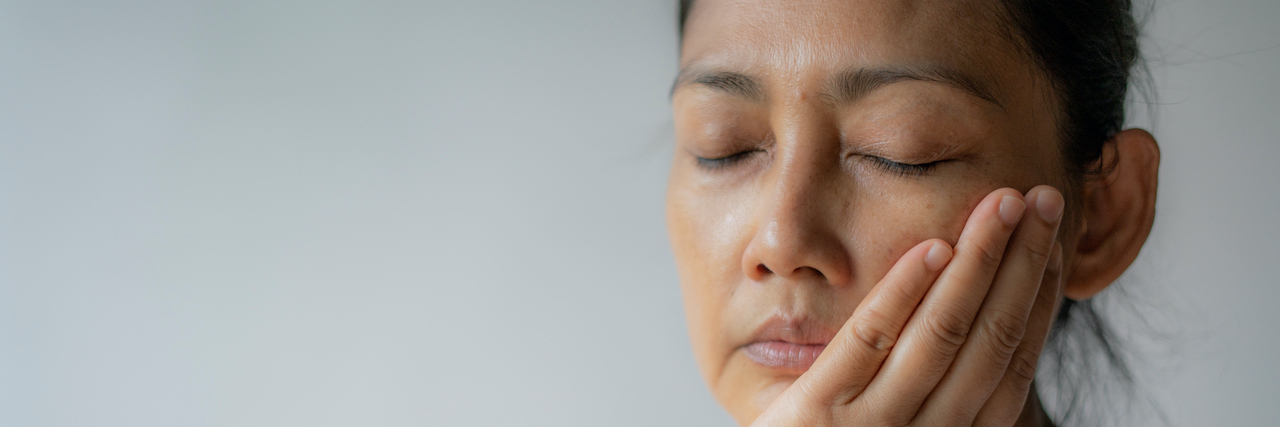Temporomandibular joint (TMJ) disorders encompass a range of conditions affecting the jaw joint and muscles controlling jaw movement. If you’re experiencing pain in your jaw, difficulty chewing, or a clicking sound when opening or closing your mouth, you might be dealing with a TMJ disorder. These symptoms can be uncomfortable and disruptive to your daily life and can trigger migraine attacks.
The Connection Between TMJ and Migraine
Studies have consistently found a significant overlap in symptoms between TMJ disorders and migraine. Symptoms like jaw pain, facial discomfort, and headache are common in both conditions.
A key factor linking TMJ disorders and migraine is the trigeminal nerve. This nerve, responsible for facial sensation and motor functions like biting and chewing, is also implicated in migraine pathophysiology. Irritation or overstimulation of the trigeminal nerve due to TMJ disorders can potentially trigger migraine attacks.
Patients with TMJ disorders have been observed to have a higher prevalence of migraine. TMJ disorders often involve heightened muscular tension around the jaw and inflammation. Both contribute as triggers for migraine attacks.
Some studies have noted that treatments effective for TMJ disorders, like occlusal splints or physical therapy, can also alleviate migraine symptoms in certain patients. This dual response further supports the idea of a shared mechanism between TMJ disorders and migraine.
Stress, a common trigger for both TMJ disorders and migraine, can exacerbate this connection.
Certain risk factors like genetics, age, and gender may predispose individuals to both TMJ disorders and migraine. For example, both conditions are more common in women, and there may be a hereditary component to their development and hormonal influences.
The research often highlights the impact of TMJ disorders on the quality of life, particularly when they co-occur with migraine. This dual burden can significantly affect daily functioning and mental health.
Diagnosing Migraine Related to TMJ
Diagnosing migraine related to TMJ disorders involves:
- Patient history: Doctors assess your symptoms and medical history, focusing on headache patterns and TMJ issues.
- Physical examination: Includes checking for TMJ dysfunction signs, like jaw pain or clicking.
- Correlation assessment: The correlation between migraine episodes and TMJ symptoms is evaluated.
- Exclusion of other causes: Other potential causes of headaches are ruled out through examinations and, if necessary, imaging tests.
Treatment Strategies for TMJ and Migraine
Managing symptoms of both TMJ and migraine can involve a variety of approaches.
- Medications: Pain relievers, muscle relaxants, or migraine-specific acute and preventive medications.
- Nerve blocks: In severe cases, doctors may consider administering nerve blocks to desensitize the trigeminal nerve and provide temporary relief.
- Therapeutic interventions: Physical therapy, jaw exercises, and stress management techniques.
- Dental approaches: Mouth guards or bite correction devices to alleviate TMJ strain.
- Lifestyle adjustments: Stress reduction, posture improvement, and avoidance of jaw-straining activities.
- Dietary changes: Avoid foods that require extensive chewing and incorporate anti-inflammatory foods.
Preventing TMJ-Induced Migraine
Preventative measures may include stress reduction, jaw exercises, proper teeth alignment, and avoiding habits that strain the jaw. It’s also advisable to maintain a migraine diary to identify potential TMJ-related triggers.
Consulting a Specialist for TMJ-Related Migraine
If your migraine attacks seem to correlate with jaw pain or other TMJ symptoms, it may be time to consult a specialist.
A dentist with experience in TMJ disorders or a neurologist who understands the nuances of migraine can offer targeted advice and treatment options.
While TMJ can contribute to migraine attacks, understanding this relationship and the available treatments can help you manage both conditions effectively.
Frequently Asked Questions
Can TMJ exercises reduce the frequency of migraine attacks?
Yes, TMJ exercises can be beneficial. These exercises help strengthen and relax the jaw muscles, which can help alleviate the tension that might contribute to migraine attacks.
How do I know if my migraine is related to TMJ or other causes?
Distinguishing a TMJ-related migraine from other types can be challenging. If your migraine attacks often accompany jaw pain, clicking sounds in the jaw, or face muscle stiffness, it might indicate a TMJ connection.
Should I see a dentist or a neurologist for TMJ-induced migraine attacks?
It can be helpful to see both. A dentist specializing in TMJ disorders can treat the TMJ aspects, while a neurologist or a headache specialist can address the migraine component. A multidisciplinary approach often yields the best results.
How long does it take for TMJ treatment to impact migraine symptoms?
The impact of TMJ treatment on migraine symptoms can vary. Some people may notice improvement in their migraine symptoms relatively quickly, within a few weeks, while for others, it might take several months.
Are TMJ-related migraine attacks different in pain intensity compared to other migraine attacks?
The pain intensity of TMJ-related migraine attacks can be as severe as any other type of migraine attack. However, you might experience additional discomfort like jaw pain or muscle stiffness, which can compound the overall pain experience.
Can improving posture help with TMJ-related migraine?
Yes, posture improvement can help. Poor posture, especially neck and head posture, can exacerbate TMJ disorders, leading to increased migraine episodes. Maintaining a good posture can alleviate pressure on the TMJ and reduce migraine frequency.
Is surgery ever an option for TMJ-related migraine?
Surgery for TMJ disorders is generally considered only after non-surgical treatments have failed and if there is an apparent structural problem with the TMJ. It’s rarely used as a first-line treatment for TMJ-related migraine.
Getty image by boonchai wedmakawand

